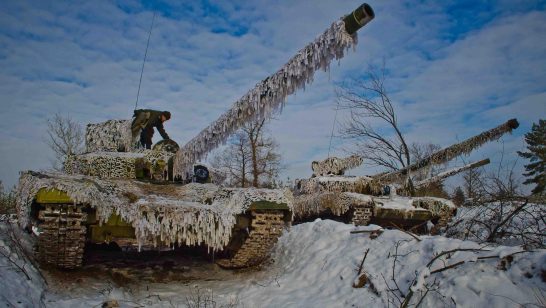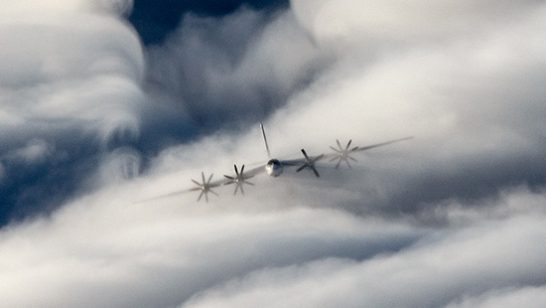
Whether the new Minsk-2 ceasefire agreement will hold or not, the crisis in and over Ukraine will continue. In fact, it is not only one but three inter-connected crises that are affecting European and Western-Russian security relations. In order to achieve a more stable security environment, policy-makers should begin to untie the knot and tackle the three crises one by one.
The Military Crisis
The illegal Russian actions in Ukraine have added a number of military challenges that the existing instruments of European security were not able to cope with. Three important elements of military stability have gone missing.
The first missing element is military transparency. The Russian military build-up at Ukraine’s eastern border in 2014 revealed a lack of impartial mechanisms for effectively monitoring troop deployments. The numbers provided by NATO, Ukraine, Moscow, and the media have varied significantly. Granted, the Vienna Document (VD), the OSCE’s most important agreement in the realm of Confidence-and-Security-Building Measures (CSBMs), stipulates a certain set quota of international inspections with which to observe the military maneuvers of other states. However, the VD’s inspection quota with regards to Russia was already exhausted by March 2014. In addition, Russia has split up military deployments (disguised as drills) in order to remain below the threshold for “prior notification of certain military activities” under the VD. The Treaty on Conventional Armed Forces in Europe (CFE), limiting heavy conventional weapons, would provide more transparency since it has a higher quota for inspections. However, the treaty has been politically deadlocked since 2002, and Russia unilaterally suspended it in 2007.
Any potential re-engagement on CSBMs should address the existing loopholes with regards to military maneuvers, aiming at increasing inspections quotas based on a formula which provides Russia with a sense of equity vis-à-vis NATO member states. Sub-regional CSBMs for the Ukraine-Russia border and the military line of contact near Crimea and in Eastern Ukraine would also be possible to devise.
The second missing element is military predictability, especially connected with the Russian and Ukrainian employment of irregular military forces or forces without national insignia. Traditional state accountability rules seem not to apply in the current conflict. However the employment of irregular forces in conflicts in the OSCE area is nothing new. Irregular military forces continue to operate in the protracted conflict zones in Transnistria, South Ossetia, Abkhazia, and Nagorno Karabakh. But employment of forces without national insignia by one of the founding members of the Helsinki process – the Russian Federation – adds another dimension.
Status-neutral solutions for monitoring and providing some predictability of action by irregular forces such as those operating in the Ukraine conflict might be a way to address the problem. However that would require a process preparing the CSBMs in the first place, and a strong mutual political will for compromise by all parties concerned.
The third missing element is a commitment to military restraint. Russia and NATO have started to engage in a game of negative tit-for-tat which resembles some of the features of the Cold War. A recent ELN report has highlighted that latest military exercises of Russia and NATO member states have led to over 50 dangerous incidents of close encounters during recent months. At the 2014 Wales Summit, NATO member states have agreed to the Readiness Action Plan which stipulates “assurance measures including continuous air, land, and maritime presence and meaningful military activity in the eastern part of the Alliance, both on a rotational basis.” Russia has responded by announcing to increase its military readiness by means of exercises and maneuvers involving sea, air, and land forces in 2015.
Conventional arms control measures for NATO and Russia, for instance clearly defining reciprocal ceilings for additional military deployments in the NATO-Russia proximity coupled with intrusive on-site inspections, could signal a return of mutual will for military restraint and could help to regain trust. Since the political conditions are not conducive at the moment, concrete measures like these unfortunately remain wishful thinking.
The Arms Control Crisis
The lack of military transparency, predictability, and mutual restraint is not the result of the Ukraine conflict alone. A crisis of European arms control instruments, pre-dating the clash over Ukraine, had essentially prepared the ground for the current crisis getting out of hand. This pertains first and foremost to the moribund CFE Treaty, but also to the Open Skies Treaty – a monitoring instrument – and the Vienna Document. In 2011, the long overdue update of the VD resulted in rather disappointing minor technical and procedural changes. At the same time, Open Skies has experienced considerable trouble due to the controversy between Greece and Turkey about the accession of the Republic of Cyprus and the Georgian refusal to accept Russian observation flights.
The crisis of arms control is affecting the Ukraine conflict and vice versa. On-going conflict makes it even harder to find common political ground on wider arms control measures. But without strengthening them, the institutions of the European security architecture are trapped in a self-reinforcing downward spiral, and the Ukraine conflict and the wider confrontation between Russia and the West are hardly solvable.
A Structural Crisis of Cooperative Security
The speed with which Russia and NATO are returning to confrontational policies 23 years after the dissolution of the Soviet Union is alarming. It says a lot about the state of the underlying structures of cooperative security. In order to understand the current crisis, one should step back for a moment and picture the grand schemes behind renewed confrontation.
Cooperative security is essentially a defensively-oriented concept which combines questions of morality and power. According to the international relations theorist Edward Carr, “political action must be based on a coordination of morality and power.” What he meant was that international cooperation has to take into account the relative distribution of power and a certain normative basis. Cooperative security fulfills both preconditions. Since it is aimed at increasing mutual security, it has to be defensively-oriented – meaning that it does not aim at changing the relative distribution of power to the advantage of one side. If a policy would aim at changing the relative distribution of power it would most likely meet strong opposition by the negatively-affected side, as seen in Russia’s opposition to NATO enlargement. In that case, NATO missed its chance to properly coordinate its power with regards to Russia and with regards to the re-distribution of power which resulted from enlargement; particularly since Moscow perceived the re-distribution of power as an existential threat to its own power ambitions.
At the same time, the most recent Russian policy towards Ukraine and the West fails the cooperative security test of morality. Russia is challenging and violating the normative bedrock of European security institutions such as sovereign equality, the indivisibility of security, refraining from the threat or use of force and, last but not least, the territorial integrity of all states.
The current state of decay of the institutions of cooperative security puts into question the ability of the United States and Russia to devise policies that achieve a healthy mixture of power and morality. The 2016 OSCE Chairmanship of Germany – the only country with a mutual interest in good relations with Washington and Moscow and, at the same time, the leading power of the EU – presents a unique opportunity to start a dialogue on these difficult issues. The recently launched initiative of an OSCE Panel of Eminent Persons, exploring options for re-engagement, is a step in the right direction. It is, however, more of a symbolic beginning, as it needs strong political support from all major powers in order to achieve a transition from a track 1.5 talking format to a serious political process.
Where to go from here?
The intertwined character of the three crises in conjunction with hardened political positions will make it extremely challenging to re-engage on Europe’s security architecture. At the same time, the current conflict in Ukraine underscores the need for stabilizing confidence-building measures. Possible technical solutions from the realm of arms control are ready to be applied. What is lacking is a serious restart at the political level. For the time being, such a restart is not in sight. Moscow has embarked on a dangerous mix of belligerent language, military muscle-flexing, and nationalistic propaganda. The West pursues a no-less dangerous strategy of pressuring Moscow to change course through the employment of sanctions and the threat to supply Ukraine with defensive weapons, without a realistic strategic aim of what sanctions and weapons supply should achieve.
What Ukraine needs now is a stable and verifiable end to the fighting. What Ukraine, the West and Russia need over the mid-term are stabilizing and up to date arms control measures. What the Euro-Atlantic space needs over the long-term is an open and serious dialogue about the principle structures underlying European security. It is high time to engage – on all three levels and on all three crises.
The opinions articulated above represent the views of the author(s), and do not necessarily reflect the position of the European Leadership Network or any of its members. The ELN’s aim is to encourage debates that will help develop Europe’s capacity to address the pressing foreign, defence, and security challenges of our time.



